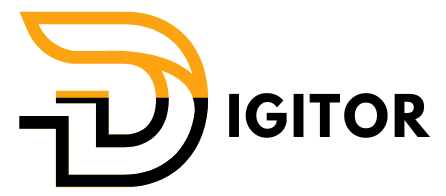Domain Extension Guide: Choose the Right One for Your Website
Choosing the right domain name is only half the battle—the other half is selecting the perfect domain extension. In this domain extension guide, we’ll explain what domain extensions are, how to choose the best one for your needs, and what each type means for your brand or business.
What Is a Domain Extension?
A domain extension (also known as a top-level domain or TLD) is the suffix at the end of a website address—such as .com, .org, or .in. It’s the part that comes after the domain name itself (e.g., in example.com, .com is the extension).
Domain extensions help identify the nature, purpose, or location of a website. Choosing the right one helps establish trust, relevance, and credibility with your target audience.
Types of Domain Extensions
1. Generic Top-Level Domains (gTLDs)
These are the most common extensions and include:
-
.com – Commercial use (most popular and versatile)
-
.org – Non-profits or organizations
-
.net – Networking and tech-related services
-
.info – Informational websites
.com is still the most trusted and recognized globally.
🔗 Learn more about gTLDs at ICANN

2. Country-Code Top-Level Domains (ccTLDs)
These extensions are tied to specific countries:
-
.in – India
-
.uk – United Kingdom
-
.ca – Canada
-
.au – Australia
These are perfect for businesses targeting local audiences or operating in specific countries.
3. Sponsored Top-Level Domains (sTLDs)
These are controlled by private organizations and are limited in use:
-
.edu – Educational institutions
-
.gov – U.S. government websites
-
.mil – U.S. military
You can’t register these unless you meet specific criteria.
4. New gTLDs
Hundreds of newer extensions are now available, such as:
-
.tech, .store, .online, .design, .digital
These are great for creative branding or niche industries. Explore new domain options at Name.com
How to Choose the Right Domain Extension
1. Identify Your Purpose
Are you starting a commercial business? Go with .com. Targeting Indian users? .in might be ideal. A tech blog? Consider .tech or .blog.
2. Consider Your Audience
If your users are primarily in a certain country, a ccTLD like .in gives your brand local credibility.
3. Check Availability
Many popular domain names are already taken in .com—but new gTLDs offer fresh branding opportunities.
4. Keep It Professional
Avoid unusual or spammy-looking TLDs like .xyz unless you’re confident in your branding. Credibility matters.
Pros and Cons of Popular Domain Extensions
| Extension | Pros | Cons |
|---|---|---|
| .com | Trustworthy, familiar | Often already taken |
| .in | Great for Indian market | Limited global reach |
| .org | Good for nonprofits | Less suitable for commercial use |
| .net | Recognized, especially in tech | Less popular than .com |
| .store/.tech | Niche branding | Less universal appeal |
Tips to Secure the Best Domain Extension
Buy Multiple Extensions
If you’ve registered yourbrand.com, consider also buying yourbrand.in or yourbrand.net to protect your brand.
Redirect Other Extensions
You can redirect users from alternate domain extensions to your main website to ensure consistent traffic.
Register Early
Premium domains and extensions sell fast. Once you decide, don’t wait—register immediately.
Need Help Selecting the Right Extension?
Choosing the best domain extension can feel overwhelming, especially with so many options. If you’re unsure what’s right for your website or brand, we’re here to help. Contact our experts at Digitor for professional guidance.
Conclusion
This domain extension guide is your starting point in selecting the right TLD for your online presence. Whether you choose the globally trusted .com, the locally relevant .in, or a creative new gTLD, your domain extension can influence your brand’s identity, SEO, and credibility.
Take time to understand your audience, business goals, and long-term branding strategy before making your decision. And remember, a well-chosen domain extension sets the tone for your entire online journey.







